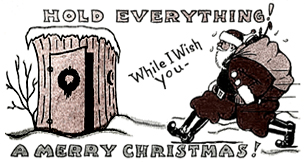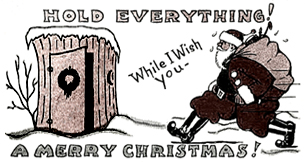My Gump businesses column evoked some pleasurable memories for Lewis Brown, a classmate of mine at Science Hill High School, from which we graduated in 1961.
Lewis wrote: “I never knew until this day that the Gump Addition was actually the Hillrise Subdivision. Growing up a ‘Gump Addition Gangster,’ we just thought the place was the Gump Addition. I was raised in the 400 block of East Chilhowie. The street was once called Seventh Avenue (from the 1890 Carnegie Land Company plat designation). I, along with many kids who grew up in the old neighborhood, played baseball and football on Hillrise Boulevard. We also played in the creek, the Gump’s backyard and the woods. Having been born in 1942, I was fortunate enough to see many of the houses on the boulevard and on Forest and Woodland Avenues being built.”
Lewis said that the area between the Baxter and Holston intersection north to Cox's Lake was an area of fun and adventure to about a hundred youngsters who resided in that part of town. “I have a copy of the surveyor’s plat,” said Brown, “ that shows the street names and lot locations of the old “Hunter-Brown” addition that my great grandfather and Dr. Hunter started. “I cannot remember the names of the Gump family, but I can tell you they were very tolerant of the kids who lived in the area. No one in that family ever fussed at us for playing in their yard or in the creek.”
Lewis said he learned to ride a small bike at the Gump home on Hillrise Boulevard. The driveway fronted Holston Avenue. He said he routinely rode a bike until he joined the service after graduation. “My aunt, Alma Ruth Brown, lived in the old home place on Chilhowie until she died several years ago. I have a picture of my grandfather, E.W. Brown standing along with some unidentified men and boys in front of his first grocery store at the corner of Roan and (144 E.) Market.”
The “Hillrise Hoodlum” then asked me if I remember George's Men’s Shop: “It was owned by George Eiche,” he said. “The family lived on the corner of Chilhowie and Baxter. One of the radio stations, probably WJHL, did a 60-minute live cut-in, which I am sure was pre-recorded for the store. I believe there was a piano in the store because George would play a tune and talk about his store. He had two sons, George and Jon.”
George’s Men’s Shop was located in the early 1950s at 234 E. Main between Beckner’s Jewelers on the west side and the Keys Building (Tunnell’s Studio) on the east. Jo-Ann’s Shop was adjacent to the Keys Building.
Lewis further asked me if I knew the name of the barbeque restaurant that was situated in a ravine on South Roan next to the old Southern Maid Ice Cream plant. Brown added: “The owner of the restaurant also owned a boat dock on Watauga Lake and kept several “Aluma-Craft” boats displayed for sale at the restaurant.” The restaurant in question was Central Barbeque owned by Albert Bosbury. He also operated Central Drive-In and Albermar Marines Sales at that some location.
Lewis ended his note with some reflective words about his growing-up years: “Some of the boys in the old neighborhood that I remember were Rick Jackson, Tommy Hord, Mike Kitts, Mark McCowen, Harmon Duncan, Charles Ellis, Ronny and Freddy Moore and Joe, Tim and Jerry Persinger. What a wonderful time to grow up in a little place like Johnson City!”

